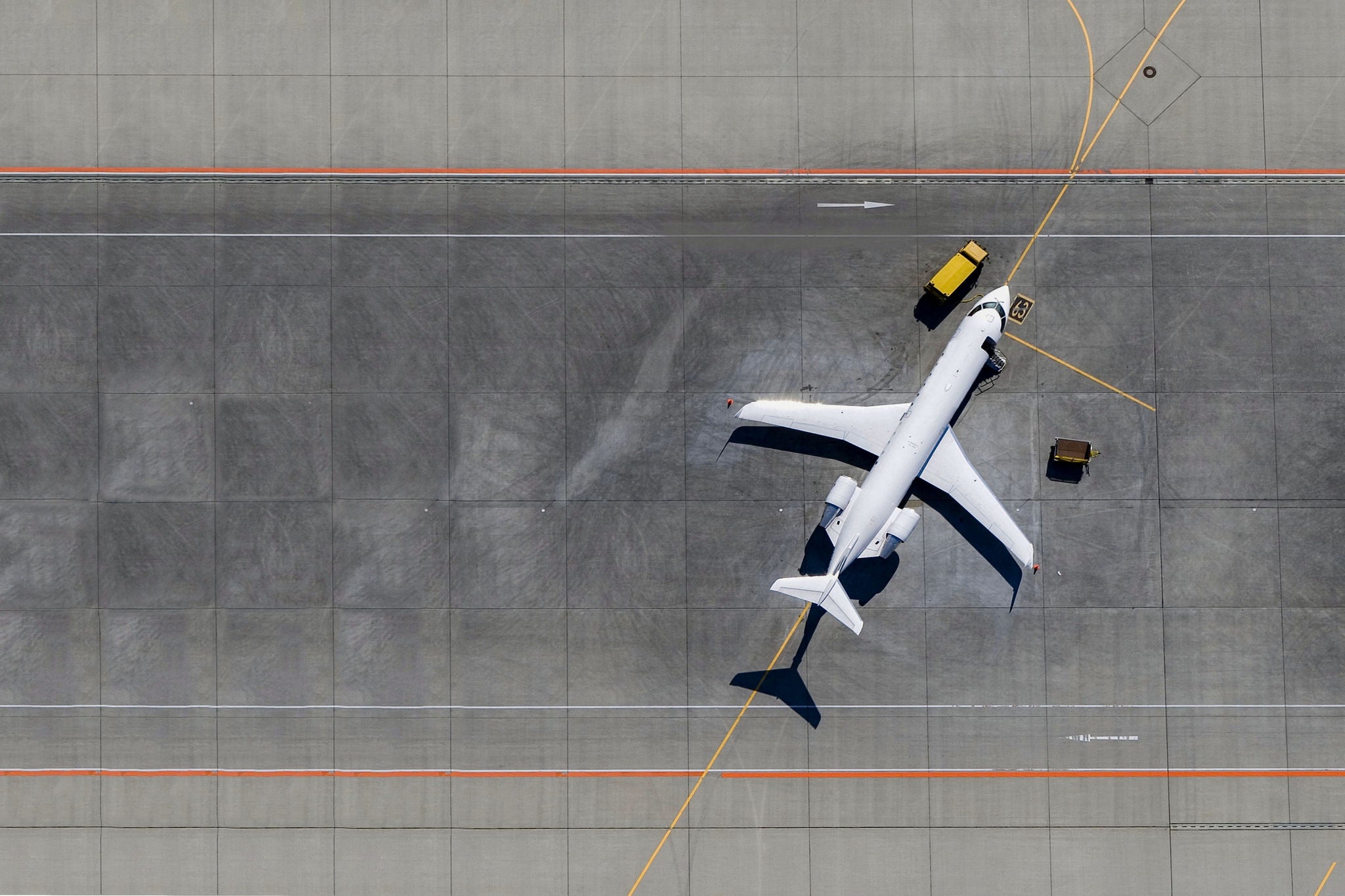We are at an inflection point, brought about by the onset of COVID-19 — the airline industry is facing massive disruption, and these impacts will be severe and long-lasting. While the previous twelve months have focused on pandemic response and contingency planning, it is now necessary to plan for the industry’s future, a future in which consumer habits will change.
While every forecast assumes some level of recovery from the demand levels experienced in 2020, opinions on how the recovery ultimately plays out vary widely. Industry forecasts generally assume that leisure demand will return to pre-COVID-19 levels, though they differ on how quickly that will be achieved. A broader and potentially more consequential debate exists with respect to whether there will be a permanent impairment to business travel demand. Even after wide vaccine availability within a certain geography, the public’s confidence in the safety of air travel is a wild card. Further, the timeline on which governments will loosen restrictions or regulations on both domestic and cross-border travel presents another variable to account for when predicting a return of demand.
Ultimately, most projections follow an S-curve trajectory as shown above, with the most rapid recovery occurring in the late 2021 to 2022 timeframe and a return to historical average annual growth rates of 5%-6% afterwards. The critical question for the industry is where exactly the top of the S-curve is, and how far it is from where demand would be if COVID-19 disruptions never occurred. Indeed, many in the industry feel that we are merely at the “end of the beginning,” as the severity of impacts experienced will prompt a reshaping of the competitive landscape for years to come.
Grounded: Despite being the “end of the beginning,” COVID-19’s impacts on the airline industry have already been dramatic
No one could have anticipated just how extreme and sudden the impacts of COVID-19 would be for commercial aviation, illustrated by the change in industry sentiment from month to month since the onset of COVID-19.
Throughout this period, US airlines alone burned an average of US$5.7b per month after adding over US$60b in collective debt.¹ This financing has been used merely to sustain operations and cover cash burn instead of more traditional uses such as the enhancing the passenger experience, improving efficiency, or other investment. Even after a safe and effective vaccine is widely available, the airline industry will have significantly more debt in parallel with a smaller operation and near-term reductions in passenger demand.
Rerouting: the need for new, more resilient scheduling
In most cases, the initial response from airlines to the shock of COVID-19 centered around safeguarding business continuity and effective crisis response planning, including government support, protecting people and workforce, securing short- to mid-term financial stability and continuing operations. Airlines retreated to core networks, cut capacity to nearly 20% of 2019 levels, eliminated all nonessential spend and accelerated the retirement of older aircraft. While demand stabilized through the latter half of 2020 and into early 2021 at around 55% of pre-COVID levels, these retirements and other cost cutting measures enacted by airlines, coupled with significantly increased debt levels will impact their operating models for decades to come.
The post-pandemic airline industry will see permanent fundamental changes in nearly every aspect of its current existence. The path to recovery is dependent on a variety of factors, many of which have their own timelines that are mostly uncertain. And while a return to pre-COVID-19 passenger travel levels is expected at some point, the time horizon is being discussed in years, not months, and comes with new travel preferences by their customers.
The COVID-19 pandemic is testing the resilience of organizations and adding increasing pressure on systems, plans and operations. The anticipated slower pace of recovery and broader transformational change within the sector will also challenge airlines to be agile and ignite their recovery through business adaptation and stronger enterprise resilience.
Ready for takeoff: Low visibility on the journey ahead
Just as the industry is broad, so too is the solution set. There is no one-size-fits-all response to COVID-19 for airlines. Even well-performing, well-capitalized companies are experiencing disruption, unable to operate business as usual. The recovery timeline for each segment of the market will differ, with carriers that are more focused on domestic or short-haul leisure travelers likely arising as the early winners. Country by country differences in vaccine acceptance and distribution rates will also result in varying recovery timelines and international travel recovery lagging behind that of domestic travel.
It is likely that, upon the successful distribution of the COVID-19 vaccine within a given geography, domestic leisure travel will restart quickly. Pent-up leisure demand exists across the world, and travelers will be eager to return to traveling once it is safe in their local country or area. In a recent survey of travelers, 94% indicate plans to travel again once COVID-19 restrictions ease, with 66% saying they will stop putting off their dream vacation and make it a priority when they resume traveling.²
While leisure demand will be quick to restart, demand for business travel is expected to ramp up slowly. Whether business demand will return to pre-COVID-19 levels is up for debate, but most agree that it will take companies longer to feel comfortable with their employees resuming travel. In addition, with remote working now being a fact of life for many businesses, along with technological advances and an increasing focus on environmental sustainability, corporations around the world are re-thinking their travel and meeting policies, providing a headwind to the return of corporate travel.
During the 2008-2009 financial crisis or in the aftermath of the September 11 terrorist attacks — events that temporarily depressed air travel demand — there was no wide availability of the virtual collaboration tools that have become a staple of everyday life during the COVID-19 pandemic. The proliferation and broad adoption of these collaboration tools, in addition to trends in corporate travel budgets and environmental sustainability, will result in a permanent headwind to business travel demand. Whatever the level of business travel demand recovery, it is likely to be similar to leisure travel in that domestic or short-haul travel will resume more quickly than cross border travel.
Low-cost and ultra-low-cost carriers (LCCs) are well positioned to gain market share as domestic or short-haul leisure demand returns quickly after the distribution of COVID-19 vaccines. For ultra-low-cost carriers especially, their domestic or short-haul focus combined with their ability to undercut competitors on price provides tremendous upside looking to the next 2-3 years. Being in a stronger position once domestic or short-haul business travel levels pick up will put more competitive dynamic in that part of the market too and enable LCCs to increase pressure on their network competitors.
Network carriers will require greater creativity to adapt to the changing demand environment in the absence of steady business demand that typically drives their profitability. Even among network carriers, however, the implications for domestic versus international demand recovery impact the outlook for operational recovery.
The factors impacting any recovery also inform the strategy for airlines as they plan to emerge from the COVID-19 crisis. While much is uncertain, one thing is sure: with a vaccine on the horizon, airlines need to begin to move their focus beyond the downturn and plan for recovery. Airlines should consider both their relative performance prior to the onset of COVID-19 and their potential to resume normal operations quickly based on their role in the market as they plot out their recovery strategy.
- Well-equipped to weather the storm: Airlines that were high-performing before the pandemic will need to redeploy their capacity effectively to capitalize on new opportunities while demand stays down. Those that are favorably positioned in the market to capture demand quickly upon recovery, such as low-cost carriers and domestic-focused airlines, will experience growth near pre-COVID-19 levels quickly. Network carriers and those with a higher cross-border focus will struggle to maintain market share and return to profitability as quickly.
- Historical stability under threat: Underperforming airlines that are suffering liquidity shortfalls must find ways to preserve and create value while improving liquidity and working capital. Airlines have already been forced to make a series of impossible decisions to reduce costs throughout this pandemic. A return to operations means even more tough decisions with regard to airline’s networks and commercial outlook. For airlines with low cash reserves, the stakes riding on these decisions are historically high.
- Pre-existing weakness in operating models exacerbated by COVID-19: Many airlines have taken on substantial debt (both private and public) in light of a shrinking market. It is inevitable that some of them — those already challenged before the pandemic — will face restructuring as the best avenue for future growth and value creation. This applies to those airlines in particular that are likely to face a slower ramp-up of operation upon recovery.
Landing: concrete action and opportunities for restructuring ensure a smooth landing after a bumpy ride
In an industry characterized by the wide array of business models, the mix of a) pre-existing conditions, b) strategic challenges already present at the start of the current crisis and c) uncertain development for the foreseeable future, individual airlines require a response that not only focuses on the short-term changes ahead but takes into account mid- and long-term disruptions. All while the increased debt-levels put a heavy burden on all players and limit their ability to invest, thus posing an “endgame scenario” for many.
The COVID-19 pandemic has had a significant impact on airline profitability and liquidity and has not been factored into current airline business planning. Three notable impact include an overall decrease in volumes, profitability and liquidity compared to pre-pandemic levels. Seasonal cash troughs are likely to be amplified as airlines develop an increased dependency on leisure travel. As a result, airlines are facing reduced capital to address the sustainable fuels transition and technology investment required to build a long-term security.
With disruption emerging in every corner of the globe, having a more resilient (financially and operationally) enterprise is key to ensuring better near-term crisis response and maintaining competitive positioning for sustainable success in the future.
Players in the airline industry need to improve their position by: focusing on their strengths and leveraging all the internal resources they have; changing their operations where necessary; and restructuring to ultimately protect value.
In our view, there are four steps that airlines can follow to position themselves for the short to-medium term:
- Scenario plan: With the level of uncertainty existing in the market now, dynamic scenario planning is vital for airlines to be agile enough to respond to changing conditions.
- Strategize: Based on the range of most likely scenarios available, airlines will need to articulate a clear, concise strategy to explain to staff, regulators, shareholders, governments and the general public how they will return to regular operations.
- Map course: Create a clear plan to bring the strategy to life and a checklist to show how it will be followed and measured.
- Action: Implement the financial and operational changes necessary to execute the strategy.
Regardless of their current situation, all airlines can follow these steps, though how they follow them will vary. What is certain is that the post-COVID-19 world will look different — we are at the beginning of a wave of disruption that will reshape industries for a generation. Airlines, and all businesses, need to actively prepare to manage this change, or the change will manage them.




